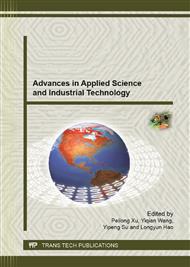p.708
p.712
p.716
p.720
p.728
p.733
p.737
p.741
p.745
Application of Fuzzy Mathematical Method in Insulator State Inspection
Abstract:
Insulator pollution flashover can bring about great damage to electric power system. At present, experimental results evaluation system is needed by all practicable and efficient methods for insulator state inspection, such as leakage current method, pulse current method, UV detection, and visible light analysis method. This thesis focused on the evaluation theory and implementation method of fuzzy mathematical method to insulator state inspection results. In addition, it introduced several basic methods, as well as the definition and rules of fuzzy mathematical method, and then proved the possibility of realizing this evaluation system.
Info:
Periodical:
Pages:
728-732
Citation:
Online since:
September 2013
Authors:
Price:
Сopyright:
© 2013 Trans Tech Publications Ltd. All Rights Reserved
Share:
Citation:


